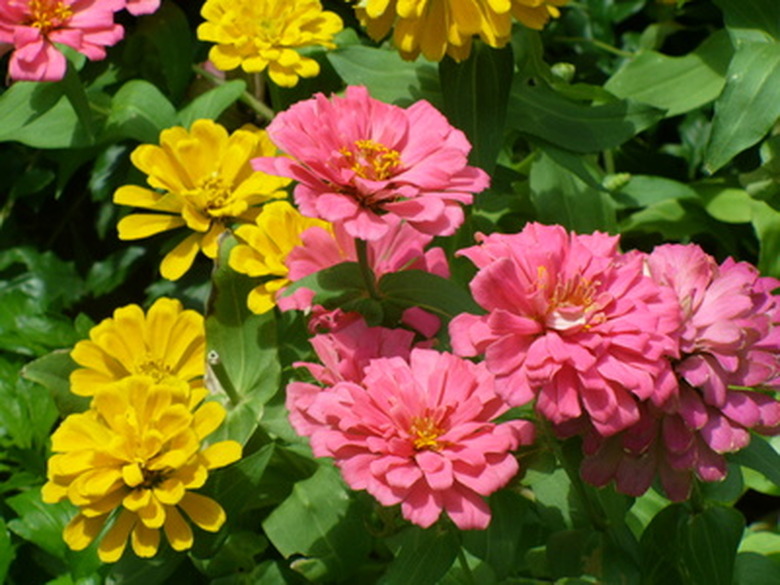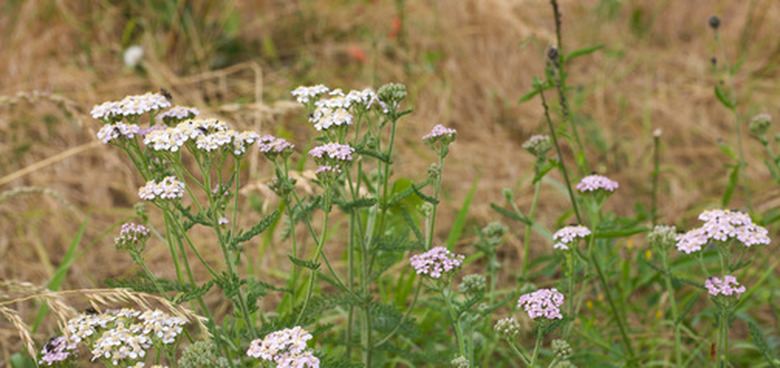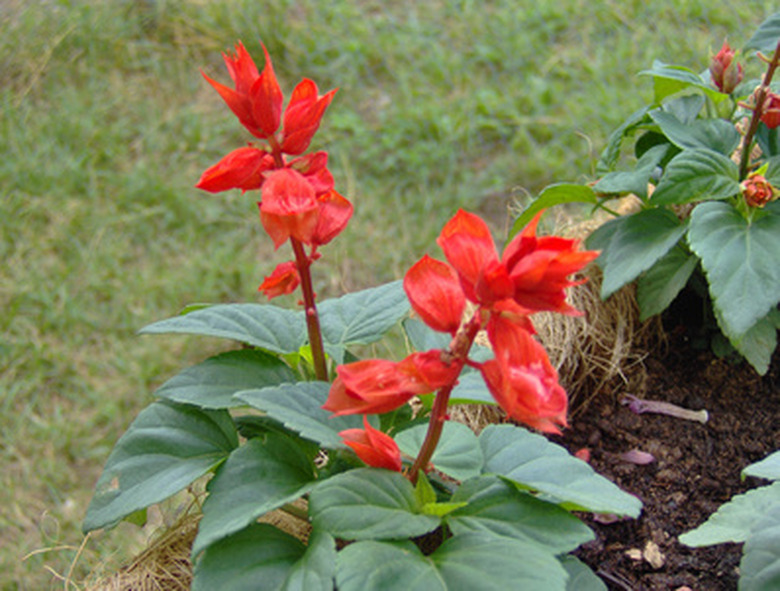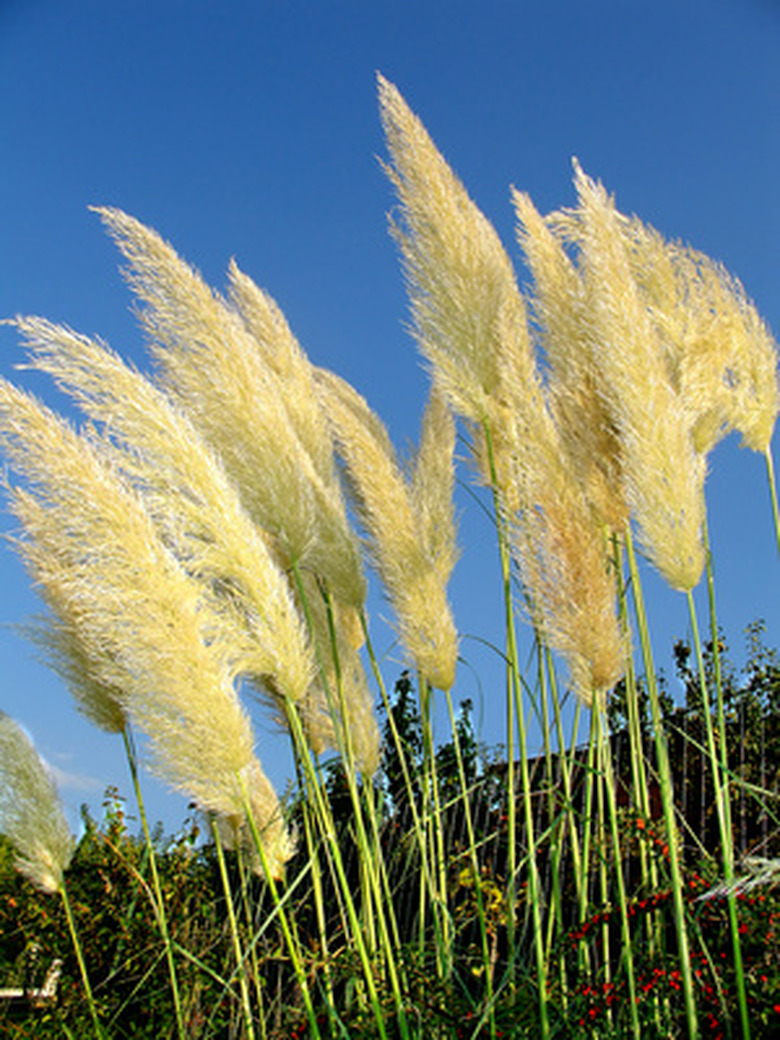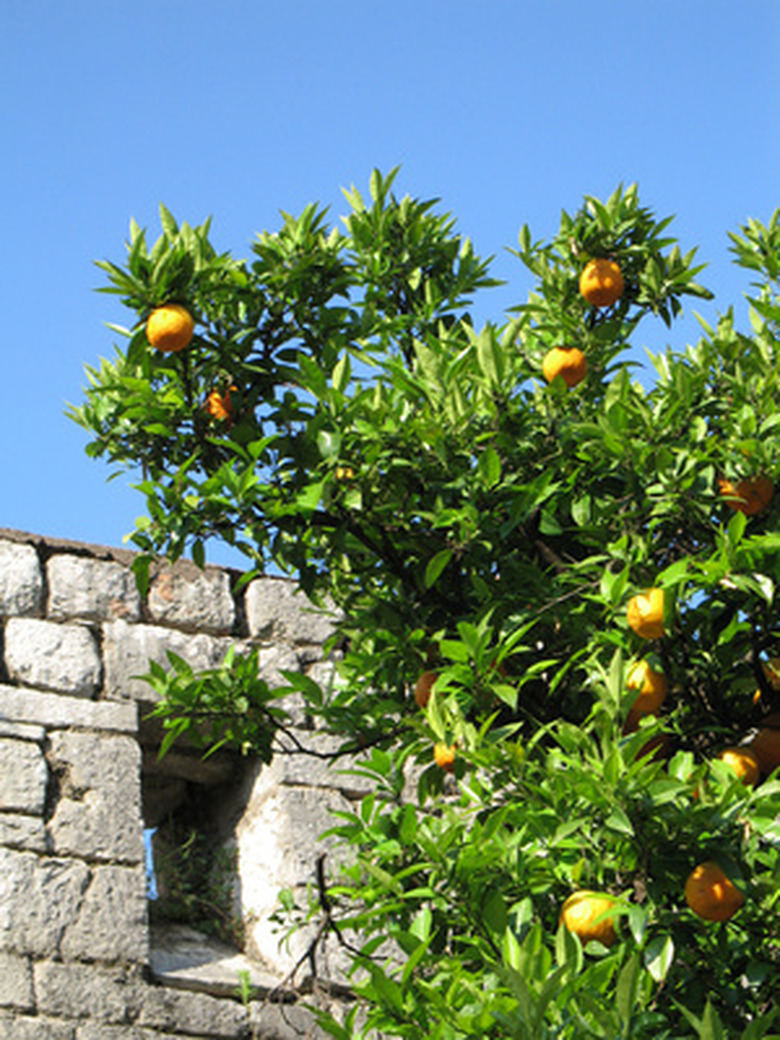Plants For The South Side Of A House
The sun beats down on the south side of a house all day long as it moves from east to west. The south side receives light for more hours every day than any other side of a house. Plants that thrive in this micro-climate love full sun. Drought-tolerant plants also do well because they require less water. The soil of the site and United States Department of Agriculture hardiness zone also should inform plant choices.
Yarrow
Yarrow toughs it out in a south-facing garden, thriving on all-day sun and minimal water. It's a prolific bloomer and makes good cut flowers that hold up when dried. Yarrow grows to 3 feet tall and spreads by underground runners. The leaves are gray-green and the blooms are shades of cream, yellow, pink and red. The USDA Hardiness Zones for yarrow are 3 through 9.
Salvia
Salvia attracts hummingbirds, bees and butterflies to the south-facing garden. It grows best in all-day sun with moderate water, but is tolerant of less water once established. The bush grows 3 to 4 feet high and as wide. The spiky flower's colors include variations of white, yellow, pink, lavender, purple and red. The USDA Hardiness Zones for salvia are 4 through 9.
Zinnia
Zinnias soak up the sun and are moderately drought tolerant. They are annuals that gardeners prefer for bright blooms and sturdiness. They also work well as a cut flower. The vivid flowers bloom in pink, salmon, pure red, white and yellow. Zinnias can grow up to 3 feet tall, depending on the variety. Flowers that thrive in the same soil, water and sun conditions as zinnias include sunflowers, dahlias and phormium. The USDA Hardiness Zones for zinnias are 3 through 10.
Drought-Tolerant Grass
Grasses add interest to a garden because of their color and movement in the wind. They withstand the hot sun and are drought-tolerant. Pampas grass is known for its white plumes and aggressive growing habit — up to 8 feet in one season. Giant burgundy fountain grass brings color to the garden and grows 5 to 6 feet high. Blades and plumes are a deep maroon.The USDA Hardiness Zones for pampas grass are 4 through 10; for burgundy fountain grass, they are 8 through 11.
Citrus Trees
According to University of California research, a citrus tree will do well in a south-facing garden and will benefit from a south-facing brick wall. The wall will absorb heat during the day and release it slowly during the night, benefiting the citrus with the additional warmth over a longer period of time. There are many varieties of citrus trees, including naval and Valencia orange, lemon, lime and tangerine. The USDA Hardiness Zones for citrus trees are 9 and 10.
